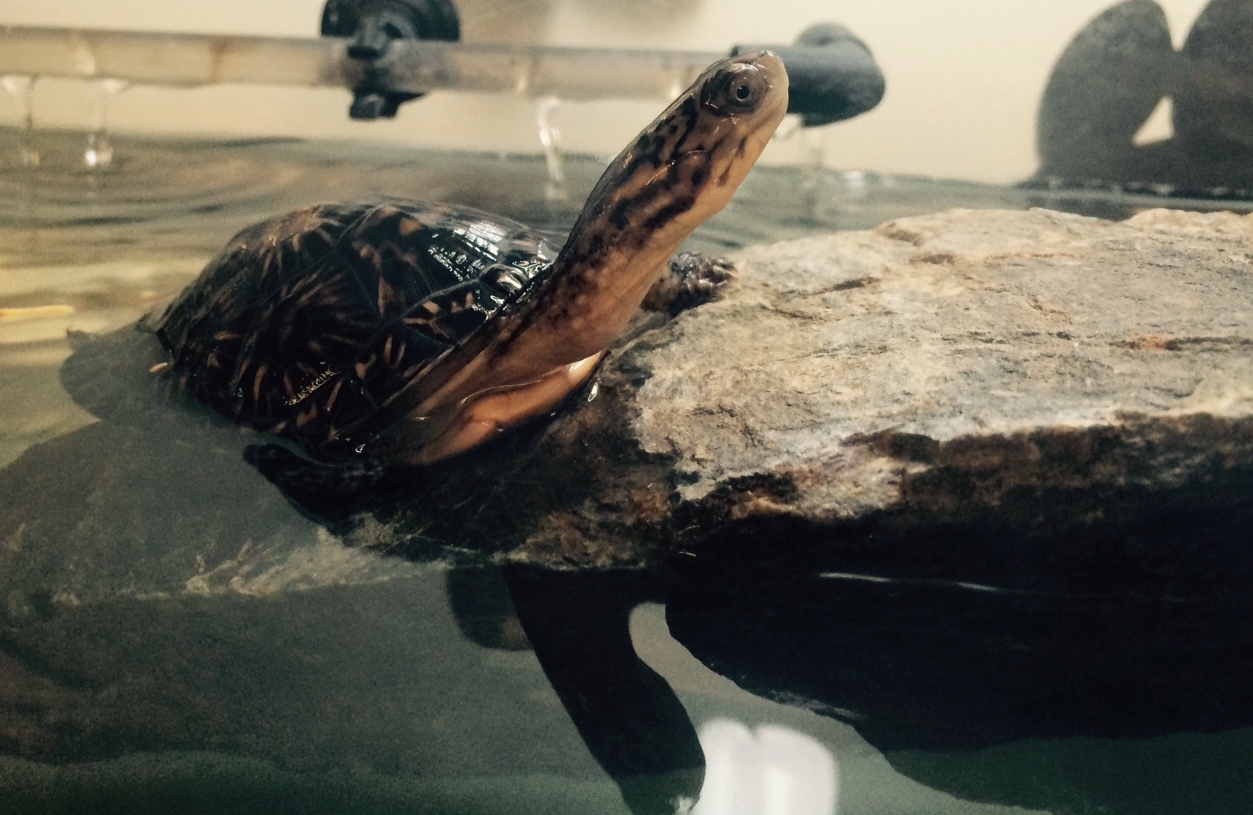Turtles beat the winter doldrums
Ethel Pink and Bob, two young Blanding’s turtles, are on a fast track. In Massachusetts, Blanding’s turtles are a threatened species, but Ethel Pink and Bob are over-achievers in their underclass.
Last fall, most of their brothers and sisters became snack food for crows, hawks or raccoons. Those few with the luck to survive are now hibernating under a foot of mud. In contrast, Ethel Pink and Bob are vacationing at the local library, lounging in an 80 degree tank, snacking on a Paleo diet, attended to by a covey of librarians and enthusiastic children. They are receiving a “head start” on life.
This advantage will leap-frog their development from infancy to adolescence in just nine months. They will grow at twice the usual pace in their first year, “aging” them from the average 50 grams of a just-born hatchling to the 150 grams of a two to four year-old juvenile. Ethel Pink and Bob will leave their first “hibernation” period next spring the size of a jelly donut instead of the potato chip size of others of their generation.
Blanding’s turtles have had a hard go of it since the Anthropocene era began 10,000 years ago. Turtles have been slowly disappearing since development and vehicles began outpacing them. Neighborhood development has divided their favorite habitats into deadly mazes of twisting roads and postage stamp sized properties. Seeking water can plunge them into a chlorinated pool instead of the gritty marsh they need. Their yearly search for a place to lay their eggs has become hazardous. Turtles have a strong preference where they lay their eggs, and the soft sandy material similar to the shoulder surface of many roads suits them well. Increasingly males are outnumbering females in the turtle world as females become roadkill at an alarming pace.
In a dwindling, dying species every unit counts. One turtle less translates to a diminishing population. Sexual maturity and reproduction are important factors in predicting the sustainability of any species. If a member of a species dies before it has a chance to replace itself this can lead to extinction of the species. Sexual maturity for Blanding’s turtles is 12 to 17 years, meaning they have to survive 12 to 17 years in order to have a chance of replacing themselves.
Desperate times require desperate measures. Naturalists have hatched up the idea of head starting Blanding’s turtles to increase their chances of growing to sexual maturity, helping the odds that each turtle can replace itself. We don’t know yet what artificial acceleration will mean to turtle psychology, turtle life span or the genetics turtles may pass along. Only time will tell, but in the meantime, Ethel Pink and Bob aren’t worrying about tomorrow.

